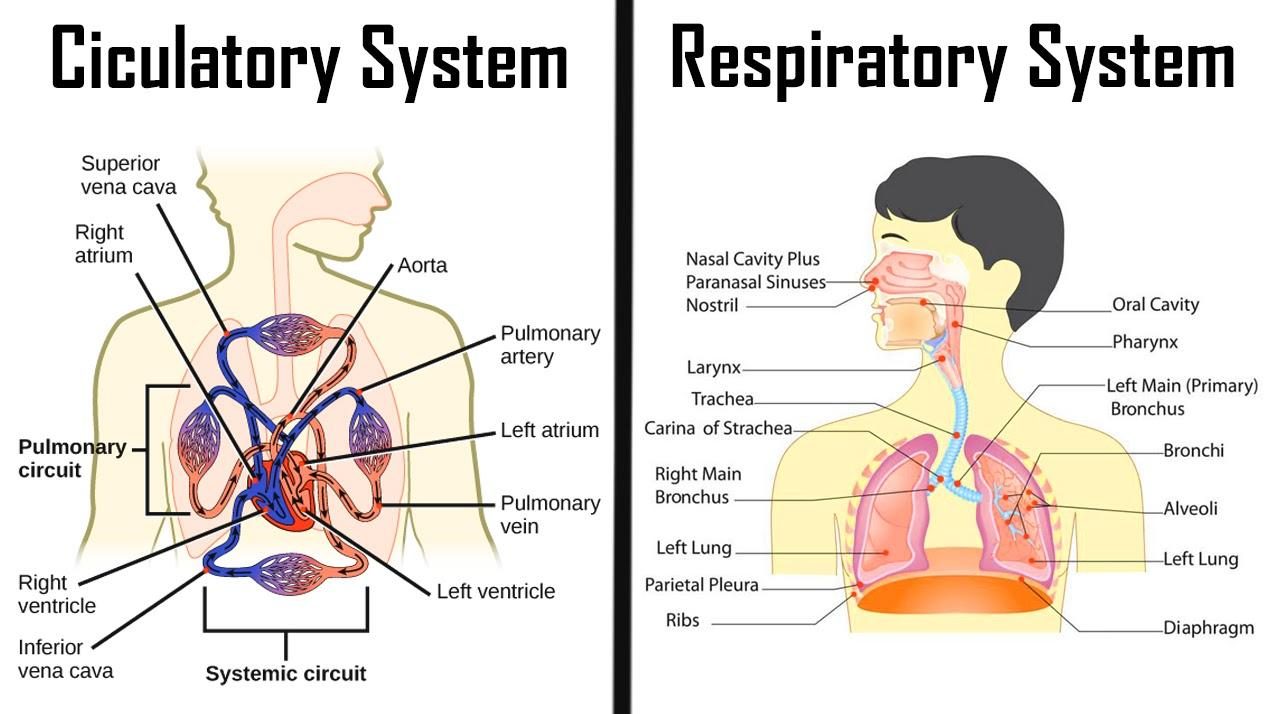
What are the similarities and differences between the circulatory and respiratory systems?
Answer
503.4k+ views
Hint: Circulatory and respiratory systems are two of the most important systems of the human body. Although they work independent of each other yet overlap in terms of functioning.
Complete answer:
Similarities between the circulatory and respiratory system are as follows:
1. Both the systems are concerned with transportation of oxygen in the body.
2. Both the systems are involved in removing waste products out of the tissues and eventually out of the body, that is, Carbon dioxide.
3. Both proceed in two separate phases or steps.
Differences between the circulatory and respiratory system are as follows:

Note:
Circulatory system is called the vascular or cardiovascular system. It is concerned with circulation of oxygenated and deoxygenated blood throughout the body. Besides, the blood also transports nutrients, hormones, enzymes, etc. to various organs while circulating throughout the body.
Respiratory system is a system that is concerned with regulating breathing actions of the body. It involves inhalation of oxygen (that helps in energy production along with conduction of other metabolic activities in the body) and exhalation of Carbon dioxide (which is produced as an end product of energy producing processes).
Complete answer:
Similarities between the circulatory and respiratory system are as follows:
1. Both the systems are concerned with transportation of oxygen in the body.
2. Both the systems are involved in removing waste products out of the tissues and eventually out of the body, that is, Carbon dioxide.
3. Both proceed in two separate phases or steps.
Differences between the circulatory and respiratory system are as follows:
| Parameters | Circulatory system | Respiratory system |
| Organs involved | Circulatory system includes the heart, veins and arteries through which transportation of blood takes place. | Respiratory system includes the nasal cavity, windpipe pipe and the lungs for carrying gases to and from the environment. |
| Functioning | It transports oxygenated blood from heart to body parts and deoxygenated blood from body parts to heart. | It involves transportation of oxygen from the environment to the lungs and Carbon dioxide from lungs to the environment. |
| Procedure | First, oxygenated blood is carried from heart to various body parts for carrying out various metabolic processes and vice-versa. | The first step is called inhalation that involves taking in oxygen from the environment and giving it to lungs whereas the second step involves exhalation involving giving out carbon dioxide from body parts to the environment. |

Note:
Circulatory system is called the vascular or cardiovascular system. It is concerned with circulation of oxygenated and deoxygenated blood throughout the body. Besides, the blood also transports nutrients, hormones, enzymes, etc. to various organs while circulating throughout the body.
Respiratory system is a system that is concerned with regulating breathing actions of the body. It involves inhalation of oxygen (that helps in energy production along with conduction of other metabolic activities in the body) and exhalation of Carbon dioxide (which is produced as an end product of energy producing processes).
Recently Updated Pages
Master Class 11 Social Science: Engaging Questions & Answers for Success

Master Class 11 Physics: Engaging Questions & Answers for Success

Master Class 11 Maths: Engaging Questions & Answers for Success

Master Class 11 Economics: Engaging Questions & Answers for Success

Master Class 11 Computer Science: Engaging Questions & Answers for Success

Master Class 11 Chemistry: Engaging Questions & Answers for Success

Trending doubts
What is meant by exothermic and endothermic reactions class 11 chemistry CBSE

10 examples of friction in our daily life

One Metric ton is equal to kg A 10000 B 1000 C 100 class 11 physics CBSE

1 Quintal is equal to a 110 kg b 10 kg c 100kg d 1000 class 11 physics CBSE

Difference Between Prokaryotic Cells and Eukaryotic Cells

The camels hump is made of which tissues a Skeletal class 11 biology CBSE




